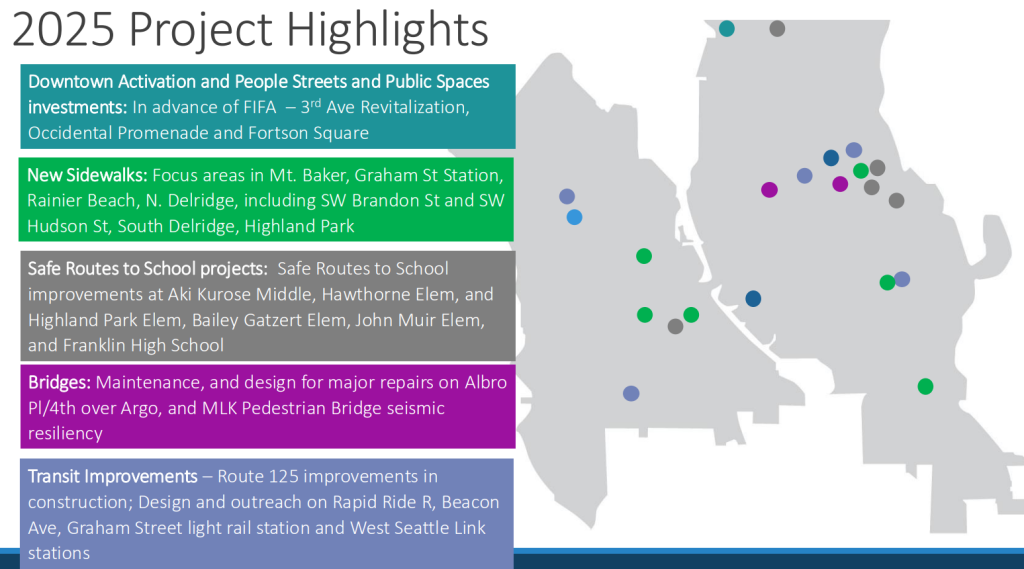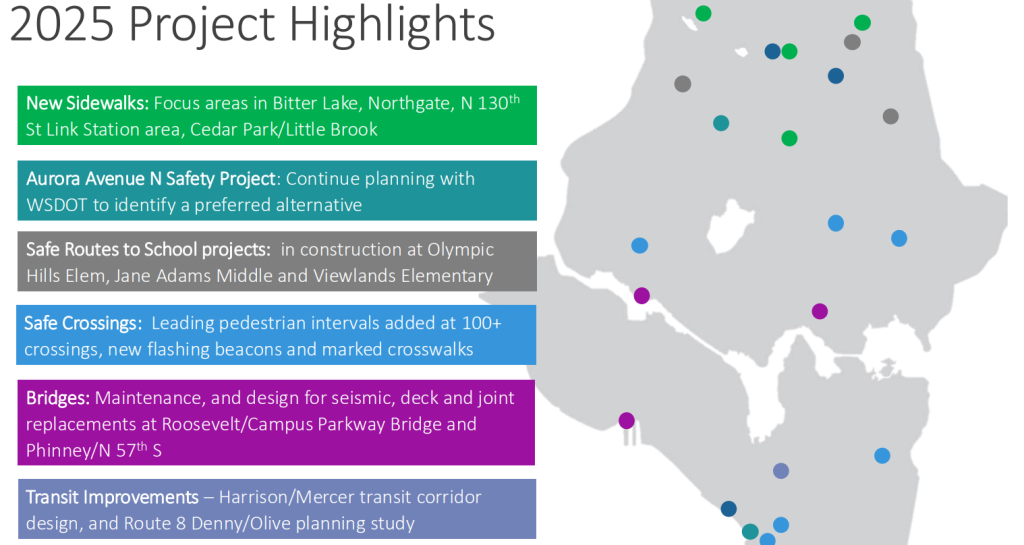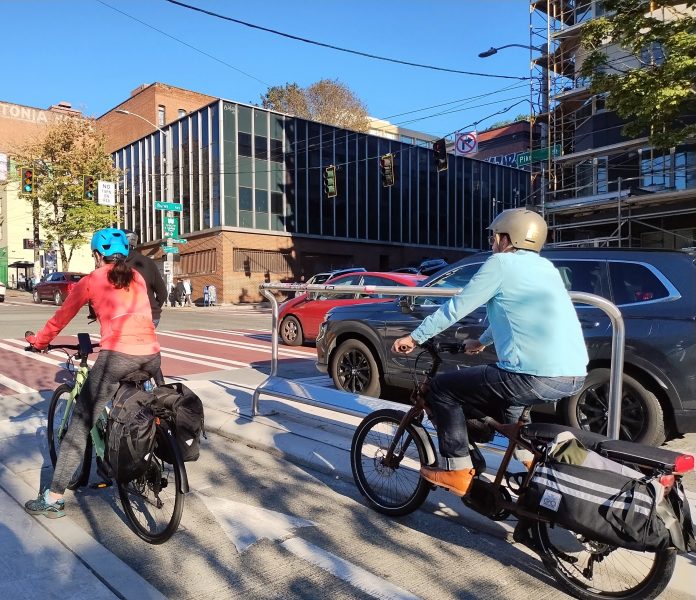
The City of Seattle secured a substantial win Tuesday night as Proposition 1, the eight-year, $1.55 billion transportation levy crafted to replace the expiring Levy to Move Seattle, was on a path to victory and leading by a comfortable margin. The road- and bridge-focused package will ensure consistent funding to the Seattle Department of Transportation (SDOT), and allow it to ramp up hiring to meet some of the levy’s ambitious promises, which include building 250 blocks of new sidewalks within the next four years.
With 66.8% of voters giving the go-ahead as of election night, Prop 1’s passage is all but assured. Budget writers can now get to work preparing the City budget for an additional $371 million in transportation spending over the next two years, funded via property tax revenues. SDOT said that 71 positions that it was holding vacant can now be filled, in addition to 72 new positions in 2025 and another 44 in 2026.
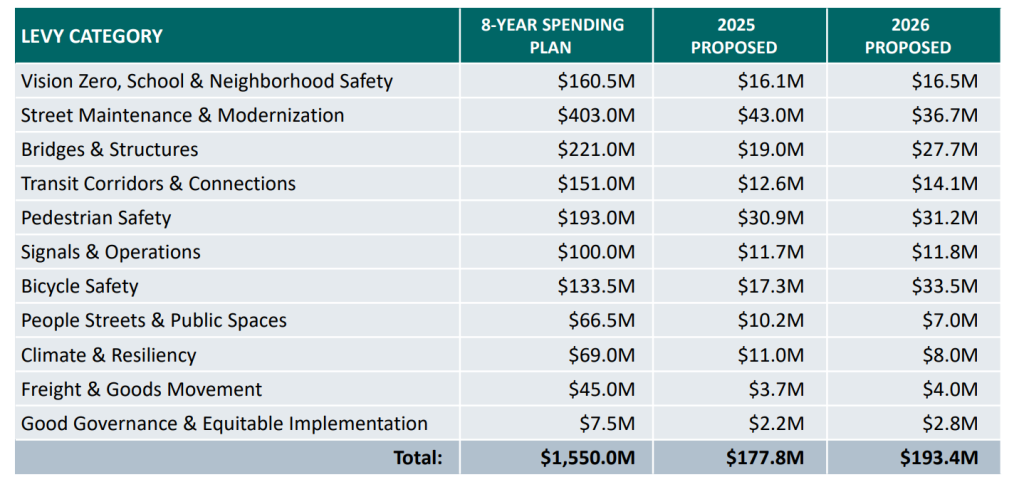
Prop 1’s wide margin on election night bolsters the arguments made by transportation advocates that a larger, more ambitious levy would have also had success at the ballot box. Polling commissioned by the Northwest Progressive Institute this spring showed majority support for a $1.9 billion levy that included more projects.
However, the City Council rejected a push by Councilmember Tammy Morales to increase the levy’s amount modestly to $1.7 billion, which was in large part due to opposition from the Seattle Metropolitan Chamber of Commerce.
As national election results continued to point to an overall rightward shift in the electorate, Seattle Mayor Bruce Harrell took a victory lap in a statement released Tuesday evening.
“Tonight’s results demonstrate that Seattle voters are committed to advancing a safer transportation system that benefits all,” Harrell’s said. “The Transportation Levy represents our steadfast dedication to a One Seattle vision, prioritizing the creation of a safer, more reliable, and better connected transportation network.”
Harrell hinted that the levy would work hand-in-hand with his comprehensive plan update. The transportation element for that update was approved earlier this year, but the housing and land use element remain in process after numerous delays and second guessing.
“We worked diligently with community members and the City Council to develop a comprehensive plan that emphasizes safer streets, dependable transit and freight movement, and improved connections across Seattle’s neighborhoods to schools and light rail,” Harrell added. “This levy will facilitate bridge upgrades, smoother roads, additional sidewalks, enhanced transit connections, and much more, all designed to support those who live, work, and play in Seattle.”
After a significant period of lag between the passage of the 2015’s transportation levy and SDOT becoming fully staffed to handle delivery of its expanded portfolio of promised projects, the department seems to be on much firmer footing now. The project delivery machine focused on finishing strong with those prior promises can now turn its attention to what comes next.
However, the same problem of multimodal federal grants evaporating under a Trump Administration, which dogged Move Seattle projects, has also emerged for its successor due to Trump’s apparent victory, though perhaps to a lesser degree. This time around, levy backers promised fewer specific deliverables (especially around transit and bike upgrades) and counted less on federal grants to meet pledges. Still, a dearth of federal grants could limit how far SDOT is able to stretch and leverage levy investments.
Initial repaving projects that SDOT has in the pipeline include East Marginal Way S in Georgetown, Roosevelt Way NE in Pinehurst, Elliott and Western Avenues in Belltown. A rebuild of Rainier Avenue between S Jackson Street and S Walden Street in Mount Baker is also on the initial project list, as is a major segment of Beacon Avenue S through Beacon Hill. Those two projects will be major undertakings, with the full scope of Vision Zero and transit improvements planned as a part of the maintenance work still unknown.
With a federal funding landscape that’s set to see seismic shifts in the coming years, bundling improvements for projects like RapidRide R along Rainier Avenue becomes even more important.
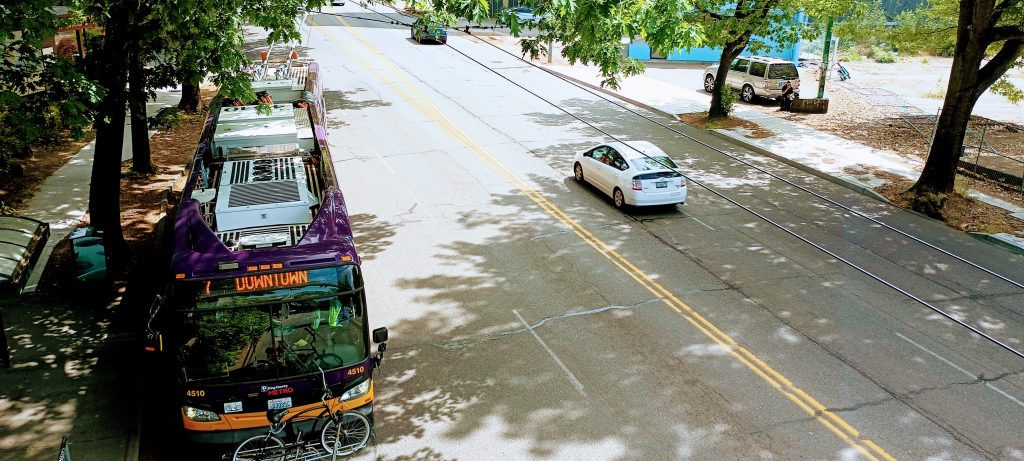
As for the 250 blocks of new sidewalks, the City is focusing on areas around transit like Mount Baker, Rainier Beach, Northgate, Bitter Lake, and around the planned Graham Street light rail station. But SDOT has planned community walks continuing through early 2025 before it will finalize full project lists.
The levy’s passage will also resurrect a long-dormant plan to create a “curbless” street along Occidental Avenue S in South Pioneer Square near Lumen Field, set to be one of the city’s signature projects around the 2026 FIFA Men’s World Cup. Funding will also be earmarked for upgrades to Third Avenue, a priority of the Downtown Seattle Association.
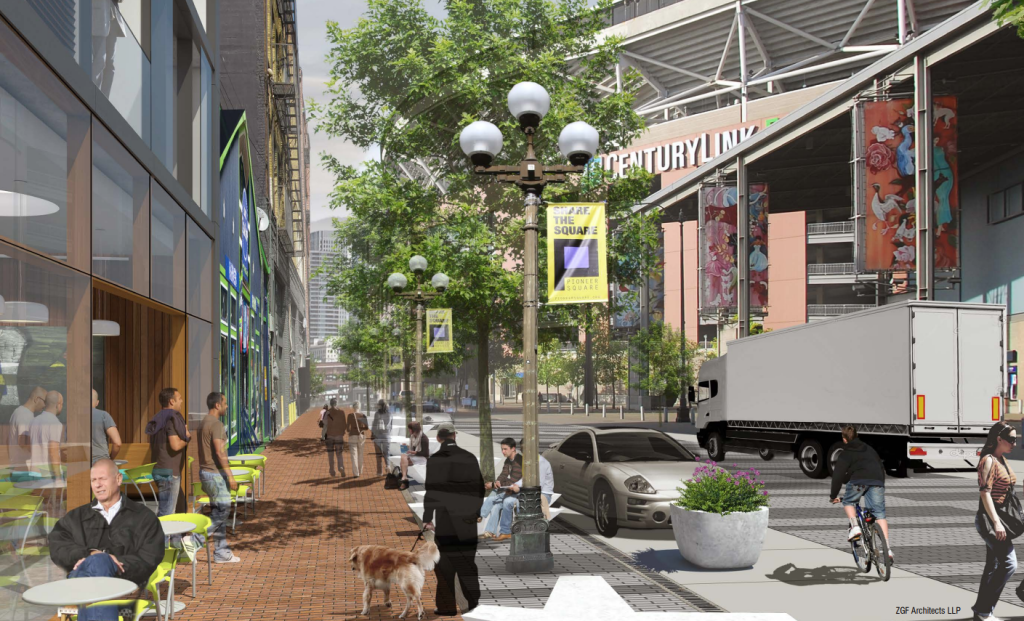
Even after a slew of amendments to Prop 1 by the Seattle City Council, the levy’s eight-year spend plan primarily reflects the priorities of the Harrell Administration. But amendments poised for adoption later this month seek to impose a level of control over spending plans that is fairly unprecedented when it comes to transportation levies in Seattle.
One amendment, jointly sponsored by transportation chair Rob Saka and budget chair Dan Strauss, would impose a proviso, or hold, on $89 million in levy dollars until a future council action releases them. “The intent of this proviso is to have SDOT proactively engage the Council in the development of detailed spending plans for Transportation Levy programs,” budget documents note.
Another amendment, also put forward by Saka and Strauss, would resurrect a program initially proposed by Mayor Harrell that allows Councilmembers to select transportation projects to fund within their own districts. During levy negotiations this summer, the Council actually voted to remove this program in favor of other spending priorities. Over a two-year period, $1 million per year would be earmarked for the seven district Councilmembers to distribute as they see fit, but how involved the SDOT would be in vetting these projects is not clear. The two at-large Councilmembers who do not represent districts would not be able to participate in this program under the proposal.
Separate from that program, Saka has also proposed to earmark $2 million in spending — diverting money away from other projects — to modify a stretch of Delridge Way SW to allow drivers to turn left across a protected bike lane into a preschool parking lot used by himself and his family.
Council is set to discuss additional amendments to the budget next week. So far, it’s clear that this Council wants to be very hands-on when it comes to shaping the spending that Prop 1’s passage will enable.
With a wide array of takeaways from other election results Tuesday, Prop 1’s passage seems to show that transportation spending in Seattle is a consensus position. Next will be the hard part of actually implementing the projects that will keep Seattle residents safe and the city moving.
Ryan Packer has been writing for The Urbanist since 2015, and currently reports full-time as Contributing Editor. Their beats are transportation, land use, public space, traffic safety, and obscure community meetings. Packer has also reported for other regional outlets including BikePortland, Seattle Met, and PubliCola. They live in the Capitol Hill neighborhood of Seattle.

